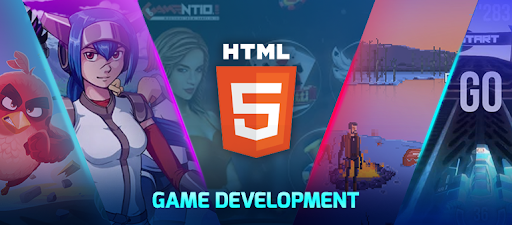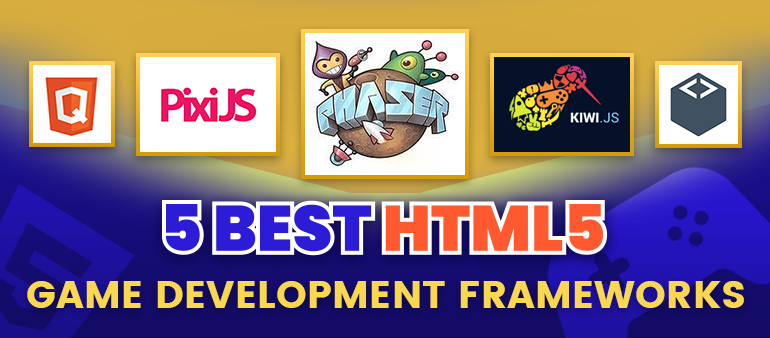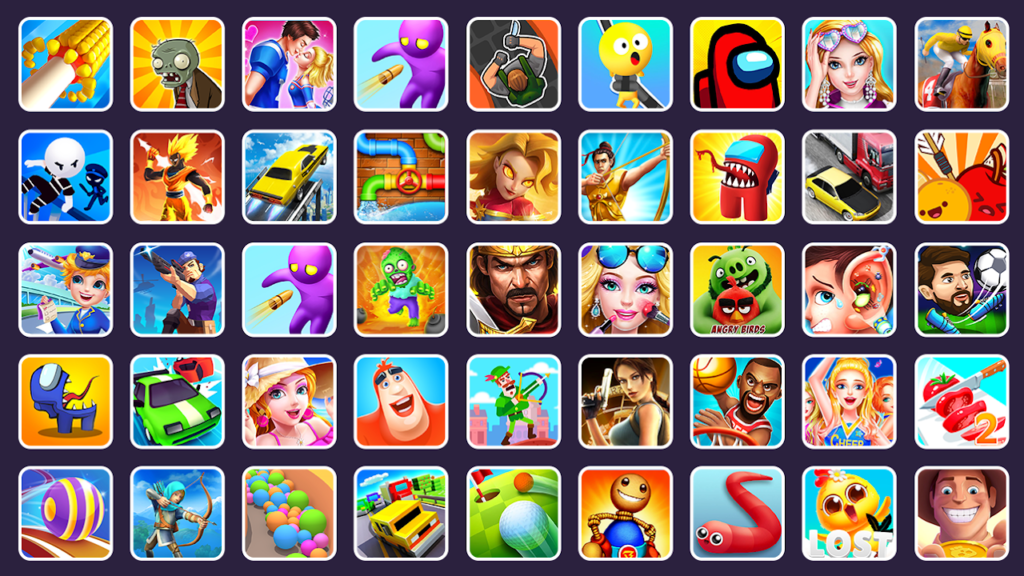Building games and apps with HTML5 has grown very popular recently. HTML5 lets developers create games and applications that work inside web browsers without needing to install extra software. This means HTML5 games and apps can run on lots of devices like desktops, laptops, tablets, and phones, no matter which operating system they use. In this article, we will look at important tools and help you to start making HTML5 games and apps.
To build HTML5 games and apps, you use HTML5, CSS, and JavaScript code. HTML5 provides structure and content. CSS handles styling visuals like colors and layouts. JavaScript programs behaviors to make things move and be interactive.
A big plus of HTML5 games and apps is running on many devices. The same HTML5 game or app can work on Windows, Mac, Android, iOS without special installs. HTML5 games and apps also easily share online with simple links to play instantly.
HTML5 games and apps have great advantages over older options. Biggest is working on diverse hardware without installation. Just open the browser app and play right away! HTML5 projects also share with simple links instead of complex installers. This makes them extremely portable and convenient for all.
To build HTML5 projects, key tools are:
1) Text editors like Sublime to write HTML, CSS, JavaScript
2) Use browsers like Chrome to test projects
3) Game engines like Construct 3 to simplify coding games.
We will explore those next. But the most important thing is starting your first HTML5 project, even basic ideas. As you practice HTML5 development services, you gain skills towards mastering this essential technology for modern games and apps!
An Introduction to HTML5 Game Development
HTML5 has become a very popular platform for building rich 2D and 3D games that run smoothly across websites, mobile apps, desktops and consoles. Core HTML5 o2D game programming offers powerful capabilities for game graphics, animation, sound, and device interaction. Core HTML5 canvas graphics animation and game development can be built using pure JavaScript or robust frameworks like Phaser, Pixi and Cocos2D.
The Core Parts of HTML5 Games
HTML5 game coding provides the structure and content through its markup language. This defines the visual components of the game – the loading screens, menus, heads-up display, etc.
CSS handles all the visual styling like colors, layouts and animations. Smooth responsive animations are key for great game feel. Modern CSS effects allow beautiful game visuals.
JavaScript programs the brains and behaviors to make everything function interactively. The game logic brings all visual assets alive with motion and rules – detecting input, moving sprites, handling scoring, audio, physics and more.
Powerful Frameworks for Simplified Development
While HTML5 games can be handcoded, frameworks like Phaser, Pixi and Cocos Creator provide pre-built components so developers can focus on crafting gameplay versus low-level code. Think of them like “game engines for web developers”.
For example the Phaser framework seamlessly handles things like:
– Sprite animation and physics
– Mobile touch and gyroscope input
– Sound effect playback and spatialization
– Scenes, cameras and rendering optimization
– Cross-platform deployment.
This makes creating polished HTML5 games much faster versus coding complex behaviors from scratch.
Building Truly Cross-Platform Gaming Experiences
A huge advantage of HTML5 game making is running seamlessly across various platforms – from desktop browsers to mobile web apps to native apps via wrappers like Cordova.
Well optimized HTML5 games play smoothly on low-end smartphones all the way up to high-end gaming PCs. Building one unified codebase using web standards enables easily deploying everywhere with great performance.
Combining HTML5 + frameworks gives developers an extremely capable UI development toolkit for HTML5 for crafting beautiful interactive games playable virtually anywhere. This scalable approach has led to massive growth in HTML5 gaming.
Why HTML5 Games are Great
HTML5 games have some big advantages that make them really great. The biggest one is that they work on all kinds of different devices. You can play the same HTML5 game on a desktop computer, a laptop, a tablet, or a smartphone. It doesn’t matter if the device uses Windows, MacOS, Android, or any other operating system.
With other types of games, you often need to install special software or plugins to get the game running on your device. But with HTML5 games, there’s no installation needed! The games just run right in your web browser like Chrome, Firefox or Safari.
Another great thing about HTML5 mobile game development is how easy they are to share and access from anywhere. Since the games live on websites, you can just send someone a link and they can instantly play the game online. There’s no executable file to download or disc to insert. Just click the link and play!
This means HTML5 games are incredibly portable. You can enjoy the same game at home on your computer, on your mobile during a commute, or kill time playing on a friend’s tablet. As long as you have an internet connection and a web browser, the game is ready to go.
The cross-platform and cross-device nature of HTML5 games makes them really convenient and accessible for all types of players. You don’t have to worry about whether a game will work on your phone, laptop or whatnot. Just find an HTML5 game you like and you can play it virtually anywhere!
Essential Tools for HTML5 Games
A key advantage of HTML5 game development is ability to create using just a text editor and web browser before publishing online instantly. However, specialized tools help accelerate building more advanced games.
Code Editors
For writing HTML, CSS and JavaScript, an enhanced code editor like Sublime Text or Visual Studio Code provides helpful features like:
– Syntax highlighting for clean readable code
– Autocomplete for faster typing
– Tools for refactoring and debugging
– Support for game frameworks.
A good editor ensures clean maintainable code as projects grow in complexity.
Web Browsers
Modern browsers like Chrome, Firefox and Edge offer built-in developer consoles to directly inspect and tweak HTML and JavaScript. This enables testing and debugging games right in the browser during development without any extra setup.
Game Engines
Game engines like Phaser, Pixi and Construct simplify coding by providing pre-built components for common functionality:
– Handling sprites, textures and animations
– Physics engines for movements and collisions
– Sound effect integration and control
– Input systems supporting mobile touch
– Scene management for better project organization.
This lets developers focus on their unique game ideas rather than building complex tech from scratch.
Finding Help from HTML5 Experts
For those new to HTML5 gaming, getting help from specialized freelancers or studios during development can greatly smooth the learning curve:
– Hiring an html5 developer for quick questions
– Working with a freelance html5 game developer to prototype ideas
– Having a html5 game development company handle art and optimizations.
With so many great tools and help readily available, HTML5 has become an extremely accessible platform for bringing any game idea to life!
Learning Resources
Learning to build HTML5 games can be challenging at first. But there are lots of resources to help:
- Online Tutorials: Sites like Codecademy, Udemy, and Coursera offer HTML5 game tutorials with step-by-step projects to follow along.
- Documentation: The official documentation for HTML5, CSS, JavaScript and game engines explains all the different parts in detail with examples.
- Books: Books like “HTML5 Game Development for Dummies” provide structured lessons for learning HTML5 games.
- Online Communities: Forums and communities let you connect with other developers to ask questions and get help when stuck.
Starting Your First HTML5 Website Development Project
The best way to learn HTML5 game development is to just dive in and build something simple yourself. Start by thinking of a basic game idea you’d like to create. This will make the project more engaging as you code it versus just following a tutorial.
Focus on Getting Core Gameplay Working
Keep the scope very small at first, like clones of Pong or Snake focused just on movement and scoring. Table stakes of making the core gameplay fun even with primitive placeholder art.
As the coding starts coming together, you can expand on features and visual polish. But resist scope creep before you have something playable end-to-end.
Use Online Resources for Help Along the Way
There is a huge amount of documentation, tutorials, questions/answers and code samples for HTML5 game development online. Lean on these heavily when learning:
– Follow tutorials on html5 game coding concepts you are struggling with
– Study source code of html5 games similar to what you want to build
– Ask questions and get help from the large html5 developer community globally
Learning from other peoples’ shared knowledge will greatly accelerate your skills.
Experiment with Different Frameworks
Each game engine like Phaser, Pixi or Unity build HTML5 has different strengths and development flows. Try building small prototypes with a few to discover which clicks with your creative sensibilities.
Over time you will develop personal preferences for frameworks. But being comfortable with multiple technology stacks makes you very employable.
Persist Through Challenges – Significant Expertise Awaits
HTML5 web application development can be extremely difficult to pick up. There will be many programming challenges and creative blocks along the journey. But each one you push through will expand your skills towards becoming an expert HTML5 game developer down the road.
Stay motivated and keep building, no matter how small. Consistent practice over time yields substantial results and fulfilling projects!
Grow Your Skills Further
While self-learning is critical, collaborating with other developers will greatly expand skills faster through sharing knowledge.
Getting Feedback and Motivation Through Communities
Active forums like HTML5 Game Devs and groups like International Game Developers Association provide spaces to connect with peers for:
– Getting feedback on game ideas and progress so far
– Finding solutions from developers who struggled with similar coding challenges
– Gaining motivation towards finishing projects by sharing wins.
Analyzing Games from Advanced Developers
Study the source code and gameplay of successfully shipped HTML5 games across various genres and scopes:
– Review implementation of touch controls for mobile optimization
– See how multiplayer was architected using WebSockets and cloud servers
– Identify rendering tricks for fast 2D/3D graphics within browsers.
This reveals techniques for solving complex issues in elegant ways.
Experimenting Across Game Engines
Try building HTML5 games and prototypes small ideas using different engines:
– Construct 3 for extremely quick 2D mobile games
– Phaser 3 for smooth 2D animations and retro pixel art style
– Babylon.js for stunning 3D browser visuals powered by WebGL
– PlayCanvas for building online 3D multiplayer worlds.
Understanding the strengths of multiple HTML5 game design tools makes you highly adaptable.
Persisting Through Hard Problems Makes You Unstoppable
HTML5 game programming throws many punches – bugs that seem impossible to squash, features that never work right, last-minute asset issues.
Pushing past such hurdles grows knowledge of how engines tick and sharpens debugging skills for unlocking solutions.
With a community to lean on and determination after each knockdown, your capabilities as an HTML5 developer will grow tremendously over time!
The Future of HTML5 Games
HTML5 game development is an exciting, fast-growing field. As web technology improves, HTML5 will get better for making rich, immersive gaming experiences. By mastering the essential tools and resources here, you’ll be ready to join the world of HTML5 games and contribute to the future of web-based gaming.
Creating Immersive Experiences
As HTML5 games become more advanced, developers can create truly immersive experiences that draw players into interactive worlds. Techniques like 3D graphics, virtual reality, and ambient sound design help games feel more believable and exciting.
HTML5 games can integrate WebGL for hardware-accelerated 3D visuals rendered right in the browser. This allows for lighting, physics, particles and other effects for richer environments. Integrating VR headsets and controllers takes immersion further with first-person viewpoints and motion controls.
Spatialized audio that surrounds players can enhance the atmosphere. Ambient sound effects, 3D positional audio, and dynamic music all help sell the virtual worlds. Taking advantage of these features allows HTML5 games to create truly engrossing experiences on par with native platforms.
Innovating Gameplay
HTML5 provides a fertile environment for experimenting with inventive gameplay concepts. The instant update deployment of web games makes rapidly iterating on new ideas simple.
Rather than relying on tried-and-true formulas, developers can push boundaries with experimental mechanics. Prototyping lots of concepts quickly without restrictive pipelines aids discovering new fun innovations. Simple visuals can focus testing on the gameplay itself.
Some innovations might not pan out. But HTML5’s agile nature is perfect for taking risks that uncover the next big thing in interactive entertainment. The technology’s portability enables instantly sharing these new concepts with others for feedback. HTML5 is thus ideal for pioneering developers to blaze new trails in gameplay.
Community and Connectivity
HTML5 makes games incredibly shareable across networks. Developers should foster communities of engaged players who connect around games.
Games can build online ecosystems with social features and player communication. Shared scores, leaderboards, tournaments and guilds give users ways to interact around play. Livestreaming and video replays also engage audiences.
Active communication channels like forums, groups, chats and messaging enable community bonding. Players guide direction by providing feedback during development or modding released games. Outreach through blogging and social media is important.
Nurturing player communities creates loyal fans evangelizing games to wider audiences. HTML5’s instant access empowers connecting players across devices. Developers should thus leverage web technology to build symbiotic game communities.
eJaw HTML5 development company
eJaw builds awesome HTML5 games, apps and sites that work anywhere. Their expert developers use the latest web technology to make things fast and beautiful across phones, tablets and computers. eJaw has made hundreds of HTML5 projects for happy clients worldwide.
Want to build an HTML5 game, web app or website? Get in touch with eJaw to make it happen!











